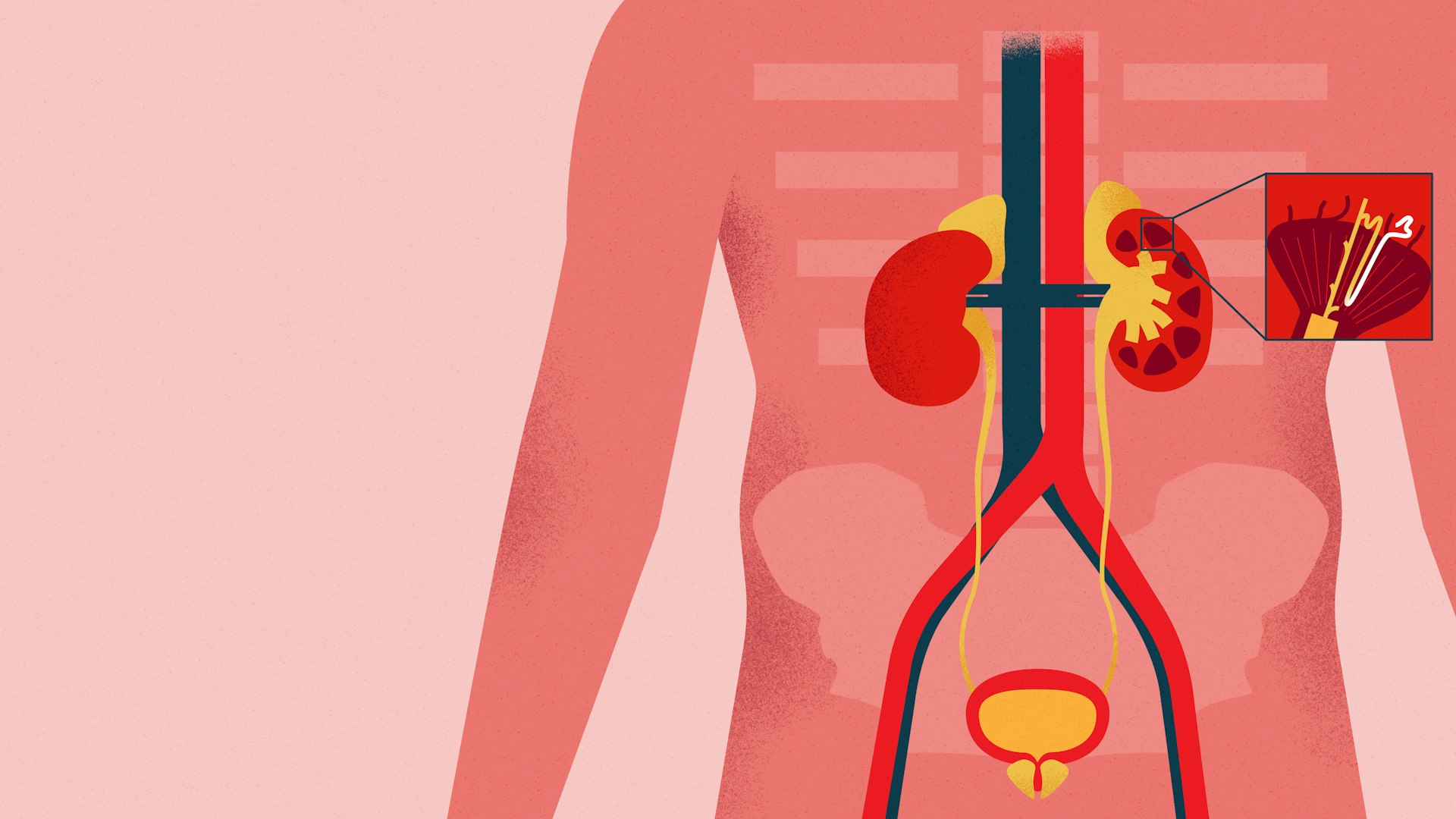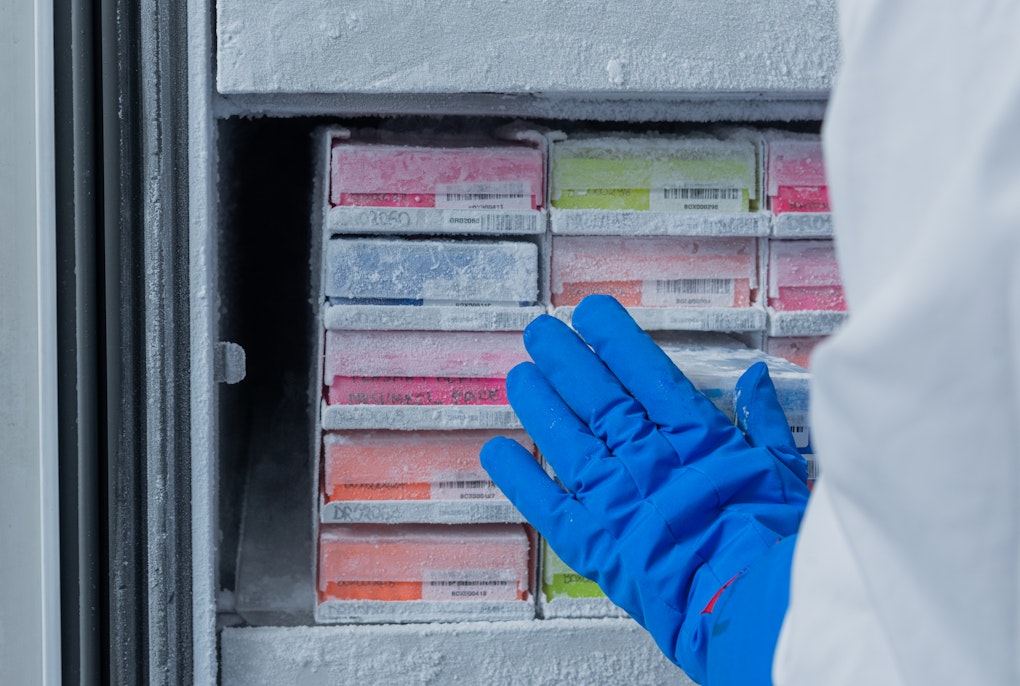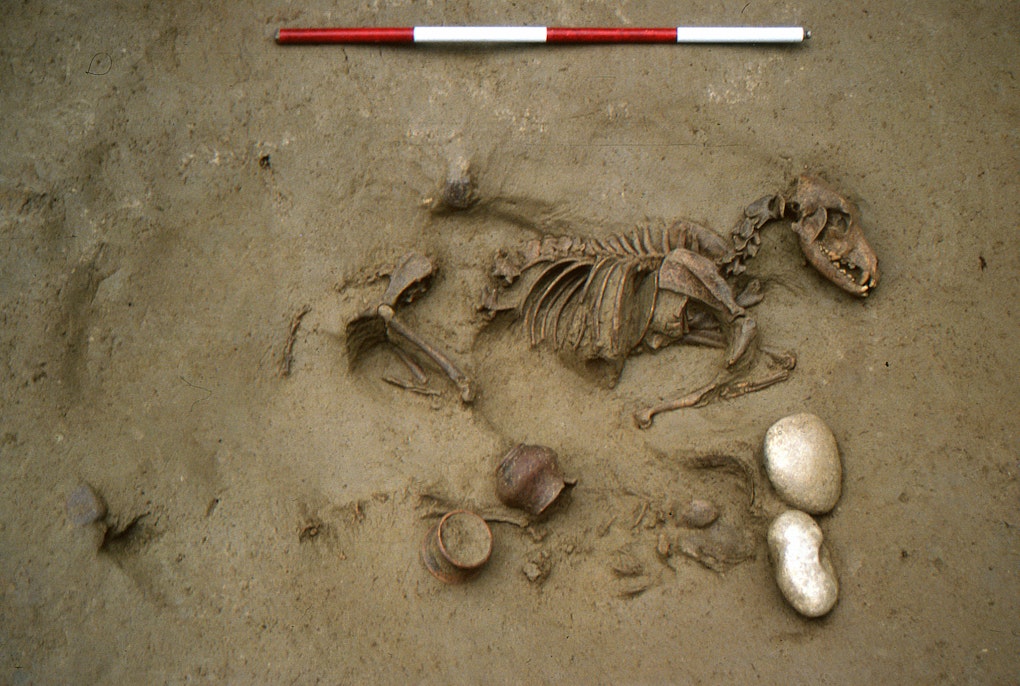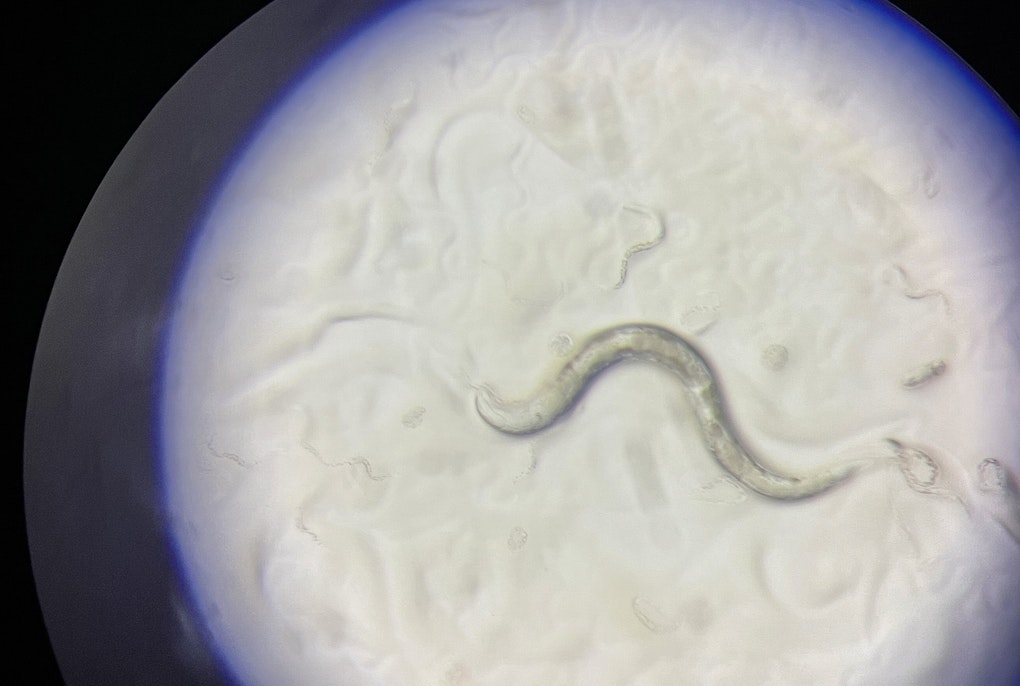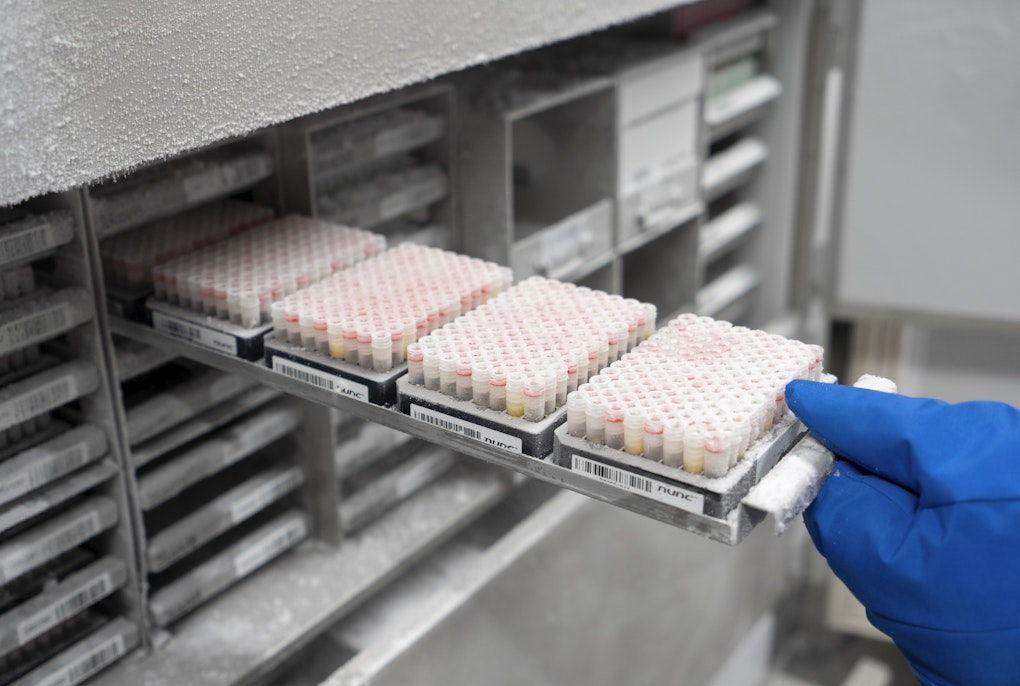magazine_ Article
Filtering data on kidney function
A look at kidney function biomarkers and associated cardiovascular risk with Epidemiologist Ryosuke Fujii
Ryosuke Fujii investigates the associations between various kidney traits and genetic predispositions and how they affect the risk of cardiovascular disease. His latest research on the subject was recently published in the journal PLOS ONE.
Behind the scenes of CKD
Chronic kidney disease (CKD) affects an estimated 10% of population worldwide. It has been estimated that by 2040, it will be the fifth leading cause of death in the world. In addition, reduced kidney function is also associated with a higher risk of cardiovascular disease. This risk increases as CKD develops and is apparent when kidneys become increasingly damaged and fail to perform their role of cleaning the blood. This decline of function, which, to be considered CKD, must be present for at least three months, is measured by an index called “glomerular filtration rate” (GFR) which represents how much blood is cleaned every minute by tiny filters in your kidney, called glomeruli, and is specific to an individual’s body size. In routine blood tests, GFR is often estimated from products in blood called serum creatinine or serum cystatin C, two biomarkers that can be measured with routine blood tests and calibrated to a person’s age and sex. We can think of biomarkers like biological “fingerprints” which can be detected in the body and used to identify a specific disease. Take for instance creatine, a chemical used by the body to provide energy to its muscles. When muscles use this energy, muscle tissue breaks down, consequently releasing creatinine into the blood. Healthy kidneys filter metabolites like creatinine out of the blood and our bodies get rid of them when we urinate. But when you have kidney disease, creatinine stays in the blood and builds up over time.
The man from Japan
Epidemiologist Ryosuke (Ryo) studies the relationships between biomarkers, nutritional intake, genetics, epigenetics, and chronic diseases. In Japan, his research saw him investigating Japanese populations for pathologies such as atherosclerosis, hypertension, CKD and the implications of diet on health. Ryo uses cohort studies to investigate determinants and patterns for non-communicable diseases and has been in South Tyrol at the Institute for Biomedicine examining data from the CHRIS and MICROS studies to better understand the association between kidney function and cardiovascular risk. Using these datasets, Ryo analyzed several kidney biomarkers including creatinine and uric acid along with other variables such as sex and age to assess kidney function in healthy adults. “Kidney function is central to most human body functions. So, it’s a target for the prevention of both cardiovascular disease and other complex diseases.” Ryo’s model with multiple kidney biomarkers was applied to a healthy population sample to capture multiple dimensions of kidney function to estimate future cardiovascular risk. His findings were recently published in a paper where, as first author, he describes these connections and compares the performance of different kidney biomarkers to predict cardiovascular risk over 10 years. The paper, recently published in PLOS ONE, found that lower renal function is associated with higher cardiovascular risk, even among healthy people. Furthermore, among the many ways to measure renal function, the most effective is a combination of all possible biomarkers, while the best single predictor of cardiovascular risk of all biomarkers is cystatin C. “Thanks to the generous participation of Val Venosta citizens, the CHRIS study encompasses a cohort of individuals who are relatively young and have a good quality of life. We can estimate certain results in this population sample, but it’s important to remember that these are just the results in South Tyrol. Results should be confirmed in other populations and in clinical settings.“ Recently, Ryo applied a similar multi-marker approach to participants of UK Biobank, one of the largest datasets from general populations for medical research, and found that this model might be useful in assessing not only cardiovascular disease but also kidney failure. From both studies among general populations, he found that this multi-marker modelling could be a better way to capture different dimensions of kidney function, while GFR defined using cystatin Cis a simple and easy marker to predict disease incidence and mortality. The ultimate aim of Ryo’s research and the motivation for his KidneyGeM³ project, of which the PLOS ONE paper is just the first part, is to eventually determine which genes are directly associated with kidney health. “Although medications which slow the progression of CKD are available, for now those that improve kidney function are not. To address this clinical limitation, many genome scanning approaches are trying to find a gene closely related to kidney function which could in turn be used to develop medications. Since this genetic approach addresses just part of the issue, a new solution is expected by combining different disciplines. That’s why I am here. I am working with Dr. Cristian Pattaro, the co-principal investigator of the international consortium of genetic epidemiology for kidney function: CKDGen. With his cooperation, I am combining the different kidney biomarkers to create an accurate measure of kidney health, otherwise known as latent kidney trait. I examine the association of this trait with each genetic variant, hoping to identify the purely kidney-specific genes.”
“Kidney function is central to most human body functions. So, it’s a target for the prevention of both cardiovascular disease and other complex diseases.”
Ryosuke Fujii
Caring for your kidneys
Apart from the genetic element, what else impacts kidney function? What environmental and lifestyle factors could affect these organs? “We need to think about modifiable risk factors for CKD, for example, dietary sodium intake. Some meat products and some processed food tend to contain a lot of sodium, so it is important to keep an eye on that, particularly in Japan where sodium intake is very high because of soy and its products. Physical activity is beneficial for kidney function and excess alcohol intake and tobacco smoking are other risk factors for CKD. Those are four important modifiable risk factors.” Ryo reiterates his potential research topics and future goal, “ to enhance the prevention of CKD using both genetics and modifiable risk factors and to combine those risk factors to create individualized prevention, based not only on environment or lifestyle, not only genetics, but a combination all three.”
A wealth of health data
South Tyrolean population studies such as the CHRIS population study and the earlier MICROS population study, hold information on 15,000 participants. The analysis of these data, as well as the analysis of data from the UK Biobank has allowed Ryo to validate a model using statistical approaches which combine various biomarkers related to kidney function and how they affect the risk of cardiovascular disease. Examining population samples to reveal the genetic factors of common diseases has been gaining importance in recent years and due to shared environmental factors, lifestyles, and limited recombination of DNA of particular communities, population cohort studies such as the CHRIS study are a valuable tool for investigating factors that increase the risk of certain conditions like CKD.
Why longitudinal?
To study risk factors for chronic disease, large numbers of people must be studied to provide statistically meaningful results. In addition, it is necessary to follow people over time to allow researchers to see which people who were healthy at the first time point, develop developing a chronic disease at a second or third time point, and which risk factors influenced disease development. The data set used for Ryo’s study was not only large but was longitudinal, this meant it had the added advantage of having been gathered over decades. By studying the same group of individuals over an extended period, Ryo could continuously and repeatedly monitor both risk factors and health outcomes. The CHRIS and MICROS studies are extremely valuable and unusual since they follow a large population over decades and reveal associations between exposure to known or suspected causes of disease and subsequent morbidity. In our case, the outcome is incidence of CKD and cardiovascular issues. This information can also be related to lifestyle and environmental factors too. By comparing the incidence rates, attributable and relative risks can be estimated, and predictions can be projected over the coming years. By participating in the CHRIS study over a long period of time, individuals from Vinschgau/Venosta provide valuable data which can be used to predict the risk of certain pathologies like cardiovascular risk. Having chronic kidney disease increases the risk of death from any cause, but particularly cardiovascular disease.
My goal is to enhance the prevention of CKD using genetics and modifiable risk factors and to combine those risk factors to create individualized prevention, based not only on environment or lifestyle, not only genetics, but a combination all three.”
Ryosuke Fujii
A full circle to move science forward
At the Institute for Biomedicine, population is both the starting point and the end point. The data comes from individuals who consent to provide their medical information to scientific research, this information is then used to provide scientific results to formulate prevention-oriented public health programmes and with research like Ryo’s, address gaps in pharmaceutical development through discovery of genetic variants related to kidney function. The data collected, and the research carried out with the consent of a community, returns to the population in the form of health-improving knowledge.
About the Interviewed
Dr. Fujii is an epidemiologist at the Eurac Research Institute for Biomedicine. He earned his bachelor's degree of Laboratory Technology from Fujita Health University. Following graduation, he earned his Ph.D. for “genetic predispositions of pollinosis” from the Nagoya University Graduate School of Medicine. Since 2018, he has been engaged as an Assistant Professor for the Department of Preventive Medical Sciences, Fujita Health University. In his spare time, he enjoys watching several sports, especially European football games and formula 1, and also playing with his child.
Ryosuke Fujii has been supported by the Autonomous Province of Bozen/Bolzano – Department for Innovation, Research and University in the frame of the Seal of Excellence Programme (nr.CUP/D55F20002560003) and the Uehara Memorial Foundation, Oversea Fellowship for Post-doc Students.
